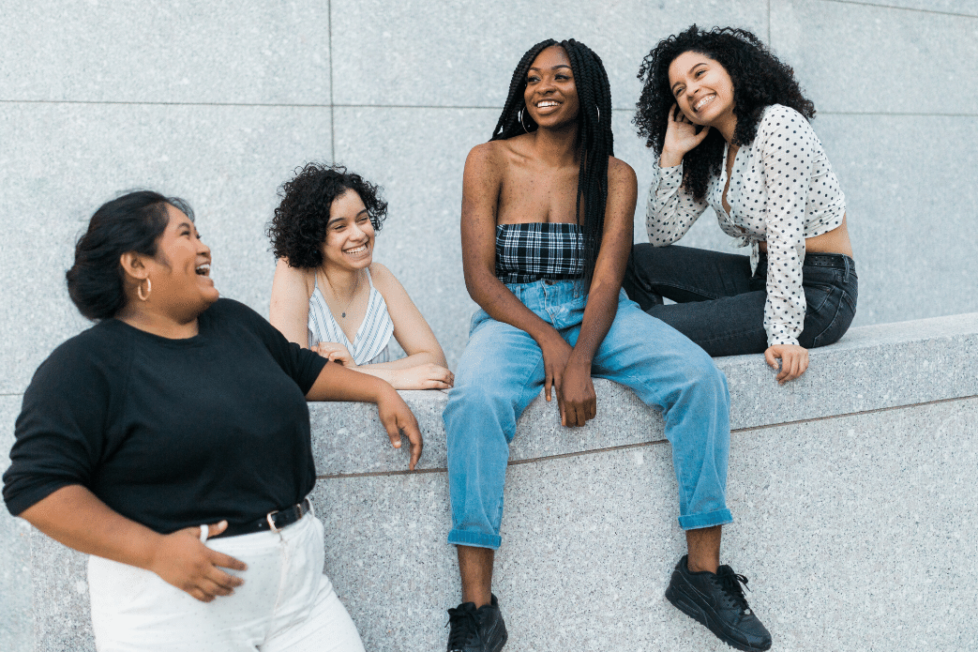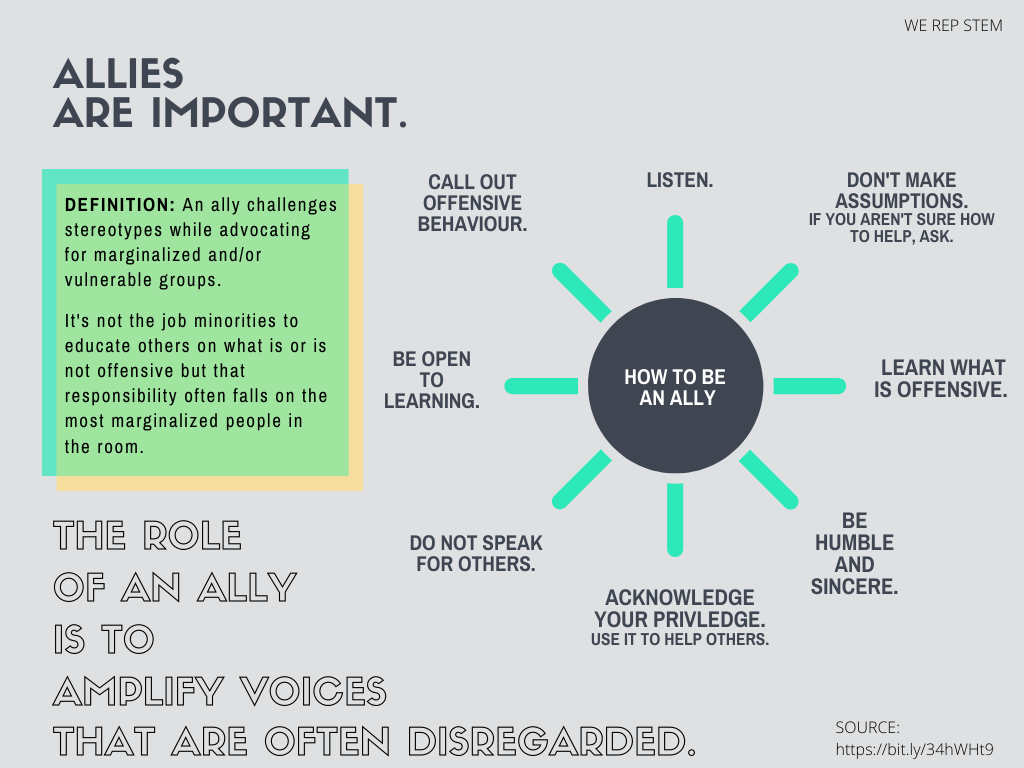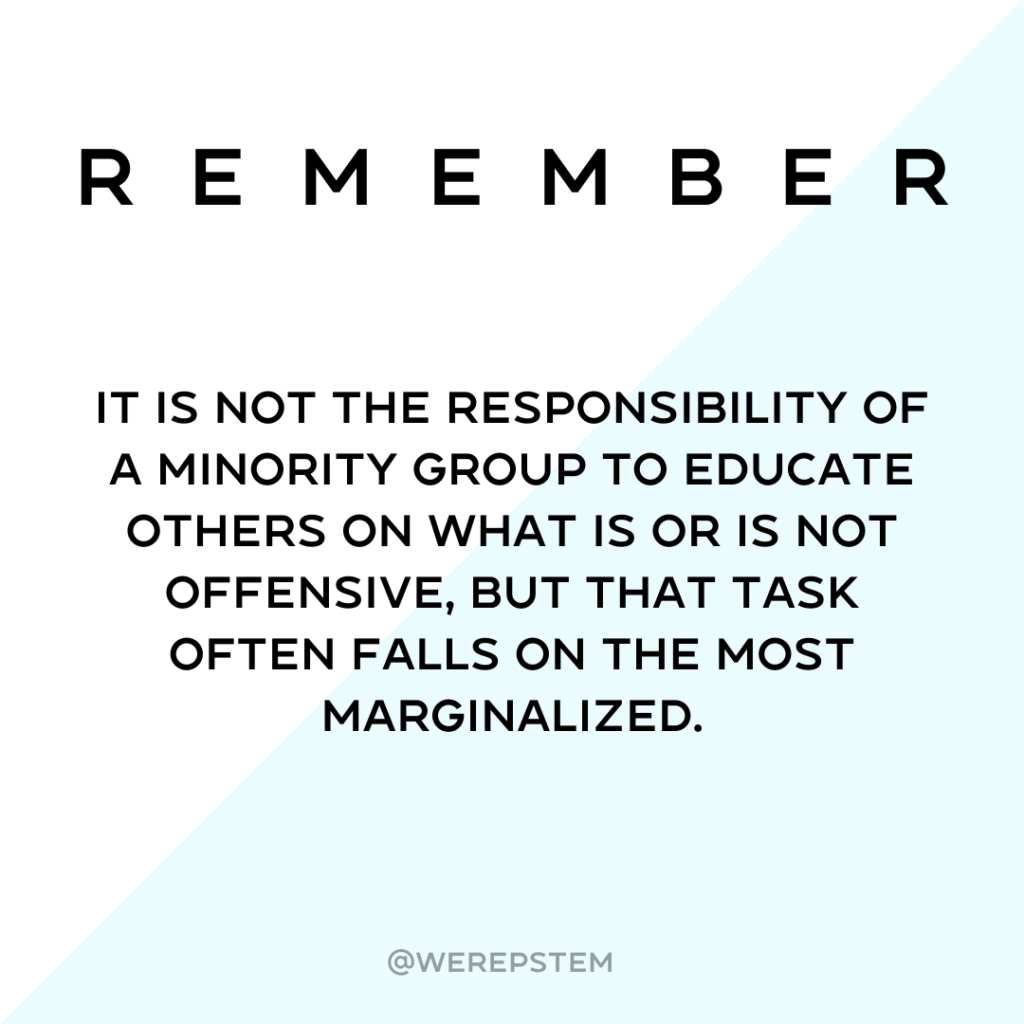Diversity & inclusion is more likely to succeed if we train people to be allies: Here are some tips

Note: This article was updated June 6, 2020.
Terms like “glass ceiling” and “boy’s club” — monikers representing academic and professional barriers that prevent advancement — are slowly being replaced with “diversity and inclusion” (D&I) and a focus on retention, support, and increased visibility of minority participants.
But in some instances, D&I programs fall short. A four-year study focusing on women of all ethnicities found that efforts to “promote and maintain” women into senior scientific roles are “largely inadequate.”
Part of the problem is that institutions haven’t sufficiently rolled-out policies supporting the development of women’s careers in STEM.
Data suggests supporting all minority groups — including people of colour, white women, individuals with disabilities, and those from the LGBTQ+ community — isn’t just good from a moral standpoint. It also can help a company’s bottom line, allow employers and schools to develop untapped talent, and give institutions a competitive edge.
So why are some D&I programs missing the mark?
One issue is that some institutions fail to recognize the difference between “diversity” and “inclusion.”
A lesson on proper allyship to the black community in an academic/lab setting. (A Thread)
— Tracy Edwards (@thetracysimone) June 5, 2020
PI's and Postdocs this is for you…
While “diversity” refers to the differences within a group — in this case, a group of people — “inclusion” is the practice of making all voices feel welcome.
But that’s easier said than done, because studies suggest many of us possess biases we aren’t even aware about.
Training workers to be allies for underrepresented groups can help with inclusion — but it can be complicated.
Studies show that every individual, regardless of race, gender, or sexual orientation, possesses some degree of unconscious bias. Being an ally is a growth exercise and may require an individual to confront, accept, and move past biases they may not even realize they have.
RELATED: ‘Death by a thousand cuts’: Real-life examples of microaggressions
An ally is a person who challenges stereotypes while advocating for marginalized and/or vulnerable groups.
It is not the responsibility of a minority group to educate others on what is or is not offensive but that task often falls on the most marginalized people in the room, according to Alberta Health Services. This can be both mentally and physically exhausting.
The role of an ally is to help amplify the experiences of people who are often disregarded.

Here are some tips on how to become an ally, courtesy of Alberta Health Services:
As an ally, understand that inclusion is a sensitive subject and you will likely make missteps. That doesn’t mean you aren’t cut out for the role. Understand that becoming an ally is a process and you will continually be learning new things.
Feel free to use as you wish. Enjoy!



